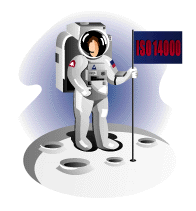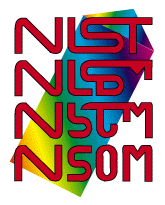Baldrige Budget
Falls Short for 1998 A lean 1998 budget allocation for the National Institute of Standards and Technology will keep the Malcolm Baldrige National Quality Award from expanding into two new sectors--health care and education. The Baldrige Award program received $3 million dollars, the same amount it received in 1997 and $2.3 million less than its budget request. "If there's one disappointment in this year's budget, it is that we did not receive funding for the health care and education categories," comments Michael E. Newman of NIST. Although Baldrige Awards won't be offered for the new categories in 1998, the program will provide health care and education criteria. Barry Diamondstone, deputy director of the National Quality Program, credits the departments of Education and Veterans Affairs with providing the financial help to make this possible. Diamondstone says that the criteria will allow organizations to continue their quality processes. "The idea that both communities are raring to go and waiting for us is our biggest frustration," he observes. Sen. Bill Frist of Tennessee has introduced a Senate authorization bill to change the original Baldrige legislation to include the health care and education categories, along with the original three--large manufacturing, small business and service. That will allow NIST to request funding for all five categories in its 1999 budget. Earnie Deavenport, former president of the Baldrige Foundation, the private-sector organization responsible for raising money to help fund the program, says the foundation hopes to raise $15 million for the new categories. "We have received a lot of support from some of the authorizing committees in Congress," states Deavenport. "We've already raised quite a bit of money from the private sector." To raise money, the foundation approaches organizations with an interest in quality management and the Baldrige Award. "Business people should feel good about funding this because whatever is good for education and health care will be good for business in the long run," notes Deavenport. Despite the program's budget setback, the foundation plans to continue fundraising efforts for health care and education, and has recruited people from these fields to help. The foundation will not accept money from pledging organizations until Congress authorizes the categories in the federal budget, stresses Deavenport. For more information about the Baldrige program, contact NIST at telephone (301) 975-2036 or visit their Web site at www.quality.nist.gov. Measuring the Value of Employee Training Programs Although a need exists for increased training in intellectual capital, few companies measure the value of these programs or their return on investment, according to a recent report by The Conference Board. Only 44 percent of the 315 senior human resource and training executives surveyed attempt to measure training's value. While more than two dozen survey participants believe that training should be systematically integrated to complement other human resource initiatives, only 8 percent of companies view linking human resource practices with training as a priority. "There is a need for flexible yet precise ways to measure the value of training," says Brian Hackett, senior research associate at The Conference Board and the report's author. But putting dollar amounts on the value of intellectual capital is not an easy task, he says. Hackett defines intellectual capital as a combination of human, structural and customer capital. These three branches represent a collection of ideas, vehicles for sharing information and positive relationships with customers. The survey's participants cite 10 top training and development organizations: General Electric, Motorola, 3M, AT&T, Andersen Consulting, IBM, Hewlett-Packard, Corning, Xerox and the U.S. Army. Each of these organizations has a strong reputation in the human resource profession because of its emphasis on innovation and strong learning cultures. Senior management involvement is the key to ensuring payoff in continuous learning, explains Hackett. Active participation by CEOs and other senior managers creates a learning culture and ensures a generous return on the investment in people. By hiring a chief learning officer, companies can integrate the disciplines of training, organization design and knowledge management.  NASA Awards ISO 14000 Contract NASA Awards ISO 14000 Contract
The National Aeronautics and Space Administration has awarded a $200,000 contract to an environmental services firm to develop a business case for ISO 14000 on an agencywide basis. The firm, MEGA-TECH, provides environmental management and engineering services to federal agencies, electric utilities and commercial enterprises. MACTEC of Germantown, Maryland, an environmental management and remediation company offering services in ISO 14000 as well as integration of ISO 9000 and ISO 14000 programs, will team with MEGA-TECH as a subcontractor. The team will conduct gap analyses at 14 of NASA's centers and installations, including Johnson, Kennedy and Goddard space centers. They also will assess the costs and benefits of ISO 14001 implementation. Creating a business case will help NASA's Environmental Management Board decide whether to go forward with ISO 14001 implementation, according to Michele Curry, the project manager for NASA. The business case includes the gap analyses, benchmarking with other ISO 14001-certified organizations similar in size and program, and cost analyses. NASA has yet to determine the benefits of ISO 14001 implementation at this early stage of the project. "We can't say what the benefits will be, but we do expect NASA will see considerable cost benefits just from the standpoint of identifying environmental aspects," says James Smith, MEGA-TECH program manager. The contract for the project is set for one year, but the team plans to complete it in six months.  Postal "Hero" Saves $4 Million Annually Postal "Hero" Saves $4 Million Annually
Dartnell Corp., a publisher of business information and training products, recently awarded its annual Customer Service Heroes Contest first-place award to Tom Guinn, a Chicago post office employee. Guinn, an address-management systems specialist, saved the U.S. Postal Service an annual $4 million by quickly processing address changes. The standard turnaround time for updating address changes is five days, but Guinn makes sure that carriers get their edit books back overnight. Guinn's work saves about 1.5 hours per route per day for the 474 carriers he's responsible for, a total of 711 hours each day. With city postal carriers earning about $25 per hour, that translates into Postal Service savings of nearly $18,000 per day, or more than $4 million annually, according to Guinn's supervisor. Saving money isn't the only way that Guinn helps the Postal Service. When a new delivery system sent out unreadable database tapes, Guinn devised a way to upload changes locally overnight, creating a back-up system that's now available if the main system malfunctions again. Dartnell chose Guinn from among 300 entrants. The criteria for the award includes taking personal responsibility for customer needs; being able to hear customer needs, even when those needs are not explicitly expressed; improving the way your organization--and your customers' organizations--do business; and connecting to customers on a human level. Guinn says that winning the award has helped him focus on what is important about his job. "We're here to take care of customers," he says. "Though we may do the same job day in and day out, we need to focus on that." U.K. Companies Register for Efficiency A recent survey of 5,000 ISO 9000-registered organizations in the United Kingdom shows that nearly 60 percent sought registration to improve their business efficiency, while only 39 percent felt compelled by customer pressure. Nottingham Trent University, which conducted the study on behalf of National Quality Assurance Ltd., polled a cross-section of organizations registered to ISO 9000 by U.K. certification bodies. Companies from different industries and ranging in size from 10 employees to a few thousand participated in the study. Despite common thinking, business efficiency surpassed customer pressure as a motivation to register. "It was a little surprising because here in the United Kingdom, we've got this impression that people are forced to register to ISO 9000 and don't really want to," says Steve Clark, commercial director of NQA. "Those results would give the lie to that." Instead, people now apply for certification much better informed of its benefits, he notes. In choosing a certification body, companies ranked price only fifth on the list of priorities after reputation, sector expertise, helpfulness and speed of response, according to the survey.  Seven Steps for Effective Customer Surveys Seven Steps for Effective Customer Surveys
To succeed in today's competitive global marketplace, companies must deliver the products and services customers want, when and where they want them. One way to understand customers' needs is with a customer survey. When performed properly, it can become an integral part of the customer relations process, according to Daniel Kanouse, Ph.D., executive vice president and chief operating officer of Take Charge Consultants. "Customers call the shots in today's business arena," Kanouse says. "Companies that shift their focus to valuing their customers will succeed in the short and long term." Kanouse recommends seven steps to improve a company's surveying process:  Know your objectives. Clearly defined objectives help keep the customer survey team on track. Know your objectives. Clearly defined objectives help keep the customer survey team on track.
 Identify the survey population. Make sure the survey sample represents the population. Identify the survey population. Make sure the survey sample represents the population.
 Verify your database. Do a sample mailing to determine the information's accuracy. Verify your database. Do a sample mailing to determine the information's accuracy.
 Assemble the best-qualified team. Select a customer survey team to find out what customers want and to recommend how to deliver results. Assemble the best-qualified team. Select a customer survey team to find out what customers want and to recommend how to deliver results.
 Develop a strategic plan and timeline. Set completion deadlines and build in an allowance for unexpected delays. Develop a strategic plan and timeline. Set completion deadlines and build in an allowance for unexpected delays.
 Collect data on a timely basis. Delays in data collection will result in return rates falling below levels required for statistical reliability. Collect data on a timely basis. Delays in data collection will result in return rates falling below levels required for statistical reliability.
 Turn survey results into actionable items and carry them through. Be sure customers see the survey results and are involved in action steps to correct problems or implement plans. Turn survey results into actionable items and carry them through. Be sure customers see the survey results and are involved in action steps to correct problems or implement plans.
Low-Cost ISO 9000 Training The New Hampshire Technical Institute's ISO Lite program is helping small companies achieve ISO 9000 certification. Developed for organizations with 50 employees or fewer, the program provides low-cost training that includes preliminary mock audits, workshops and assistance with the registration audit itself. "We saw that the cost of consulting and implementing ISO 9000 in large companies was very high," says Cindy Gannaway, director of the institute's Technology Deployment Center. "We wanted to see if there was something we could do for small companies." ISO Lite provides coaches for on-site training with an organization. Coaches, usually ISO 9000 management representatives or retired employees of ISO 9000-certified companies, usually have passed the lead assessor course. A coach will develop a project plan for the organization, then conduct a mock audit and gap assessment to familiarize the organization with the real thing. Management commitment is one of the most important criteria for ISO Lite eligibility, maintains Gannaway. "We've turned down a company or two because I just didn't feel like the management was open enough about the changes that needed to happen," she adds. Most companies participating in the ISO Lite program are based in New Hampshire. But as these businesses grow, the program may expand as well. For more information about ISO Lite, telephone (603) 271-6663.  Optical Microscopy Focuses on Nanometer-Scale Images Optical Microscopy Focuses on Nanometer-Scale Images
Near-field scanning optical microscopy, a new imaging technique, combines the nondestructive advantages of optical microscopy with nanometer-scale resolution near that of atomic force or electron microscopes. NSOM works by channeling laser light through a fiber-optic probe, scanning about 10 nanometers above a sample surface, then collecting it on the surface's other side. An opening at the probe's tip measures a scant 50 nanometers wide, smaller than a wavelength of visible light but large enough for a small portion of light energy, or photons, to escape. National Institute of Standards and Technology physicists, working in collaboration with researchers at the University of Virginia and the Naval Research Laboratory, recently created an image of a photonic crystal, a test material made by embedding an array of tiny glass cylinders in a matrix glass. The NSOM image shows that light, rather than traveling straight through the sample, is guided through the crystal by the cylinders. Numerous laboratories worldwide have embraced and developed the NSOM technique in order to image and characterize nanometer-scale features on biological membranes, semiconducting devices and substrates, fiber-optic communications components and other materials. Physicists involved with the NIST program plan to refine NSOM measurements and modeling further so that the technique can provide truly quantitative measurements of these structures' optical properties. Other NIST research groups are developing NSOM applications, including nanometer-scale chemical composition analysis. For more information, visit NIST's Web site at www.nist.gov or contact Lori Goldner, A320 Metrology Building, NIST, Gaithersburg, MD 20899-0001, telephone (301) 975-3792, e-mail lori.goldner@nist.gov. |


